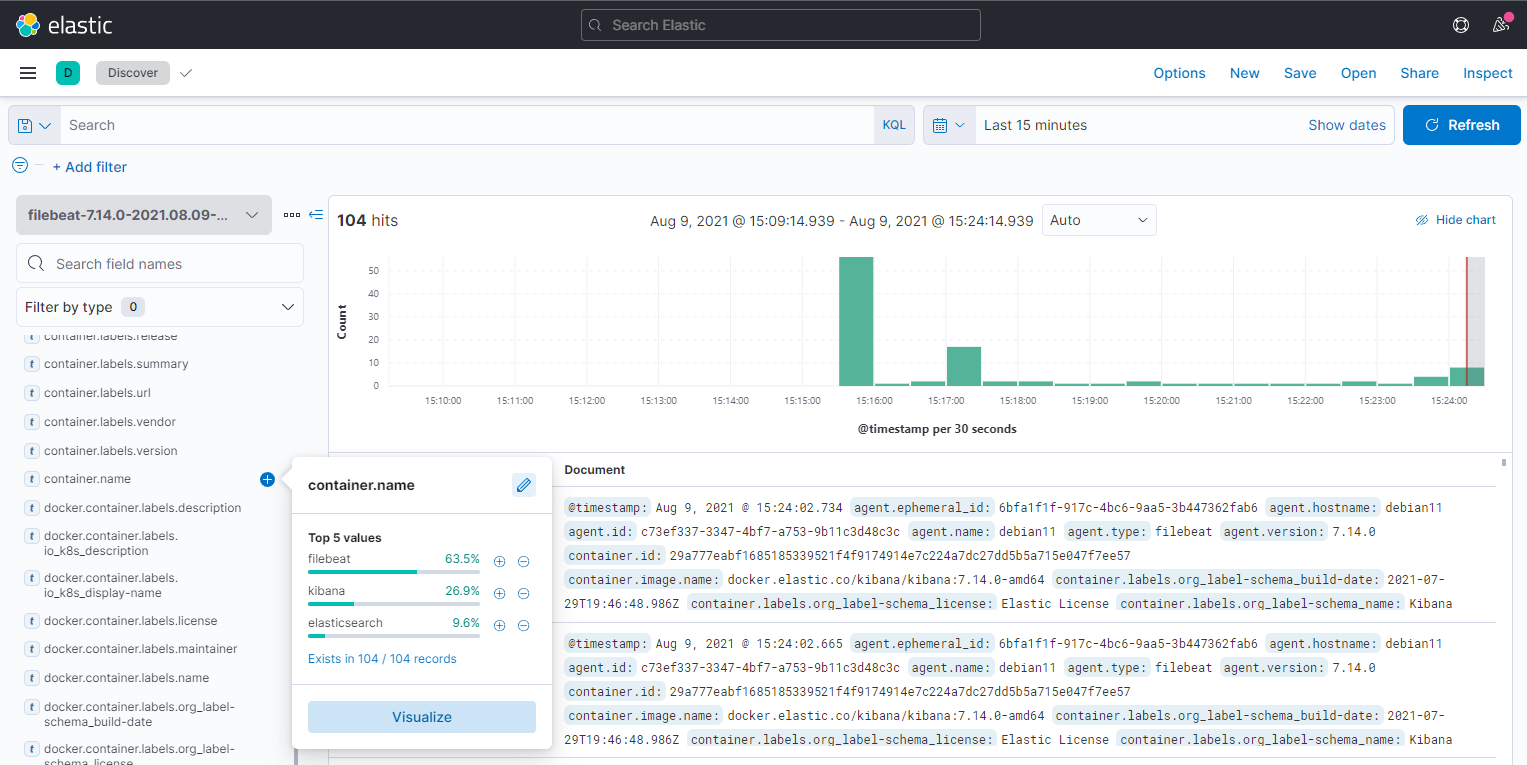
It excludes ELB health checks from the logs, adds a custom field called “index_name”, and sends to logs to their respecgive pipeline.
#Filebeats s3 install#
Install and configure Filebeat to read nginx access logs and send them to Elasticsearch using the pipeline created above. For example, the first field is the client IP address. The pipeline will translate a log line to JSON, informing Elasticsearch about what each field represents. Define a pipeline on Elasticsearch cluster. We use the last two ingest methods to get logs into Elasticsearch. Practical example: nginx log ingestion using Filebeat and pipelines Or using Firehose to load logs into Elasticsearch. Like, a Lambda function that gets triggered when a log is uploaded to S3 or CloudWatch. Part of the Beats family of data shippers. Beats (Filebeat) - Filebeat reads (log) files line by line as they are written and sends data to Elasticsearch using one of the methods above.Ingest nodes are part of Elasticsearch, no need to set up anything extra. Ingest node pipelines - introduced with Elasticsearch 5, can do some light ETL, enough for many use cases.Amazon Elasticsearch service does NOT include Logstash, which means that it’s another thing to setup, pay for and worry about. But that also makes it costly in terms of resources. Logstash can execute plugins which give it a lot of power. Documents (log records) are being sent to Logstash where they can be transformed, enriched, sent to other loggers, etc. Logstash - separate component that sits in front of Elasticsearch.Direct API call - POST to Elasticsearch directly (usually not what you want).An index is identified by a name (that must be all lowercase) and this name is used to refer to the index when performing indexing, search, update, and delete operations against the documents in it. a log line is a document (structured record)

Document: basically a record, but it doesn’t have to be structured.Spinning up a cluster is out of scope for this post. Basically it’s a good setup for a proof of concept or for starting with Elasticsearch. All of these have their place and advantages, but might not be needed right away. No Logstash, CloudWatch, Kibana Firehose or any other thing like that. It involves an Elasticsearch cluster and a server to send logs from. It’s hardly AWS specific, but it assumes an AWS Elasticsearch cluster and has a few notes regarding that. Possibly the way that requires the least amount of setup (read: effort) while still producing decent results. filebeat -e -c filebeat.Nginx Logs to Elasticsearch (in AWS) Using Pipelines and Filebeat (no Logstash)Ī pretty raw post about one of many ways of sending data to Elasticsearch.

To delete the Filebeat registry file For example, run: Until Logstash starts with an active Beats plugin, there won’t be any answer on that port, so any messages you see regarding failure to connect on that port are normal for now. filebeat -e -c filebeat.yml -d "publish"įilebeat will attempt to connect on port 5044. filebeat -e -c filebeat.yml -d "publish" & filebeat -e -c filebeat.yml -d "publish" Make sure paths points to the example Apache log file, logstash-tutorial.log, that you downloaded earlier: Open the filebeat.yml file located in your Filebeat installation directory, and replace the contents with the following lines. Step 3 – Configure a filebeat.yml with a some log file
#Filebeats s3 download#
$ wget Step 1 – Download your preferred beat. To get started, go here to download the sample data set used in this example. Filebeat has a light resource footprint on the host machine, and the Beats input plugin minimizes the resource demands on the Logstash instance.

Filebeat is designed for reliability and low latency. Filebeat client is a lightweight, resource-friendly tool that collects logs from files on the server and forwards these logs to your Logstash instance for processing.


 0 kommentar(er)
0 kommentar(er)
